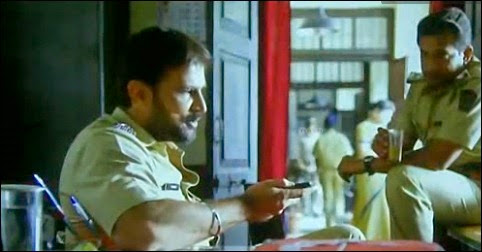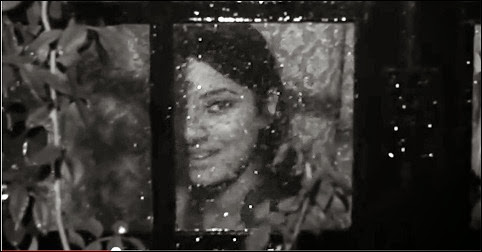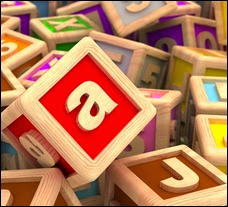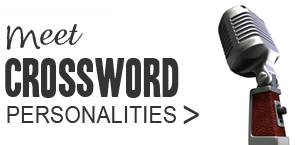 There are times when, while watching a movie, we find a character say something that prompts us to think – here's someone with the makings of a cryptic crossword setter. This character need not be in the mould of a glib-tongued Bond; s/he may be a person ordinary within the film's framework who lets out an unexpected flash of lexical wizardry.
There are times when, while watching a movie, we find a character say something that prompts us to think – here's someone with the makings of a cryptic crossword setter. This character need not be in the mould of a glib-tongued Bond; s/he may be a person ordinary within the film's framework who lets out an unexpected flash of lexical wizardry.
Some such characters from movies I've seen.
1. Lata Srivastav, Chupke Chupke (1975)

Why her?
Lata asks Vasudha why the man has given her a ring with the letter 'S' on it, when her initial is 'V'. The exchange between them:
Vasudha: Wo mera naam hai na Vasudha, V-A-S-..., wo S hai.
Lata: Wo S nahin, tu ass hai.
Rough translation:
Vasudha: That's from my name Vasudha, V-A-S-..., that's the S (pronounced 'ass').
Lata: That's not the S, you are the ass.
Wordplay type demonstrated: Homophone
2. Gru, Despicable Me 2 (2013)

Why him?
Gru resists being arm-twisted into an undercover job for the Anti-Villain League (AVL), and takes his leave from the head of the league with these words:
Gru: Good day, Mr. Sheepsbutt.
Silas Ramsbottom (AVL head): Ramsbottom.
Gru: Oh, yeah, like that's any better.
Wordplay type demonstrated: Charade
3. Inspector YP Singh, Raja Natwarlal (2014)

Why him?
This policeman's mission in life is seemingly not just to nab Raja, but to craft all possible cryptic clues around the word CON. Not a chance for crossword-style wordplay slips by when he's around.
Example 1:
Heroine (answering her phone): Hello? Kaun?
Policeman: Con! Con hi to karne gaye ho wahan tum log.
Rough translation:
Heroine: Hello? Kaun (Who's that)?
Policeman: Yes, you've gone there for a con.
Wordplay type demonstrated: Bilingual homophone
Example 2:
Heroine: Wo ek chhota-mota contractor hai.
Policeman: Contractor! CONTRACTOR mein se TRACTOR uda de. Kya bacha? Con!
Rough translation:
Heroine: He is a small-time contractor.
Policeman: Contractor! Strike out from CONTRACTOR the word TRACTOR and see what you get. Con!
Wordplay type demonstrated: Deletion
4. Meeta Sen, Anubhav (1971)

Why her?
In the song Mujhe Jaan Na Kaho Meri Jaan, Meeta Sen asks her husband not to call her jaan (beloved), with this rationale:
Jaan na kaho anjaan mujhe, jaan kahan rahti hai sadaa
Anjaane, kya jaanein, jaan ke jaaye kaun bhala
Rough translation:
Don't call me jaan (beloved), anjaan (ignorant one) - jaan (life) does not last forever
Anjaane (naive people) kya jaanein (do not know any better), nobody departs jaan ke (on purpose)
In true cryptic crossword tradition, when the word jaan appears multiple times in the opening line, the hearer does not know that the one of the jaans refers literally to life. The cryptic reading is revealed only a little later. The meaning of jaan keeps switching fluidly from 'life' to 'beloved' to 'know' and the hearer has to keep up with the shifts to make sense of the song.
Wordplay type demonstrated: Multiple Definitions
5. Danish, Shamitabh (2015)

Why him?
Aspiring actor Danish is speech-impaired, but with the help of "voice transfer" technology, he manages to speak in the voice of another man (Amitabh Sinha) and lands a big role in a Hindi film. He is then asked to choose a screen name. Danish picks the name "Shamitabh", and explains his choice in a way that would do a pro setter proud.
(i) Shamitabh is hidden within 'DaniSH + AMITABH Sinha'
(ii) Shamitabh is a charade of SH (silent) + Amitabh, which implies that behind the mute front stands the voice-lender
Wordplay type(s) demonstrated: Hidden Word, Charade with Cryptic Abbreviation
---
Over to you. Can you add to the list?
PS: In case you missed the memo - an Open Magazine feature about cryptic crossword solvers in India: The High of Hidden Words.
Related Posts:
If you wish to keep track of further articles on Crossword Unclued, you can subscribe to it in a reader via RSS Feed. You can also subscribe by email and have articles delivered to your inbox, or follow me on twitter to get notified of new links.
 Cryptic clues with hidden answers are perhaps the trickiest for the crossword setter to disguise. Since all the letters of the answer have to be given out to the solver, in the sequence expected, the clue can end up being too easy. And so, most often, setters reserve the use of this clue type for short words as they are more convenient to conceal in the clue.
Cryptic clues with hidden answers are perhaps the trickiest for the crossword setter to disguise. Since all the letters of the answer have to be given out to the solver, in the sequence expected, the clue can end up being too easy. And so, most often, setters reserve the use of this clue type for short words as they are more convenient to conceal in the clue.  There are times when, while watching a movie, we find a character say something that prompts us to think – here's someone with the makings of a cryptic crossword setter. This character need not be in the mould of a glib-tongued Bond; s/he may be a person ordinary within the film's framework who lets out an unexpected flash of lexical wizardry.
There are times when, while watching a movie, we find a character say something that prompts us to think – here's someone with the makings of a cryptic crossword setter. This character need not be in the mould of a glib-tongued Bond; s/he may be a person ordinary within the film's framework who lets out an unexpected flash of lexical wizardry.




 Every letter of the English alphabet has a "letter name". Vowel names are the same as the letters they represent, consonant names are usually <consonant>EE (e.g. B = BEE, C = CEE) or E<consonant> (e.g. F = EF, M = EM).
Every letter of the English alphabet has a "letter name". Vowel names are the same as the letters they represent, consonant names are usually <consonant>EE (e.g. B = BEE, C = CEE) or E<consonant> (e.g. F = EF, M = EM). 




